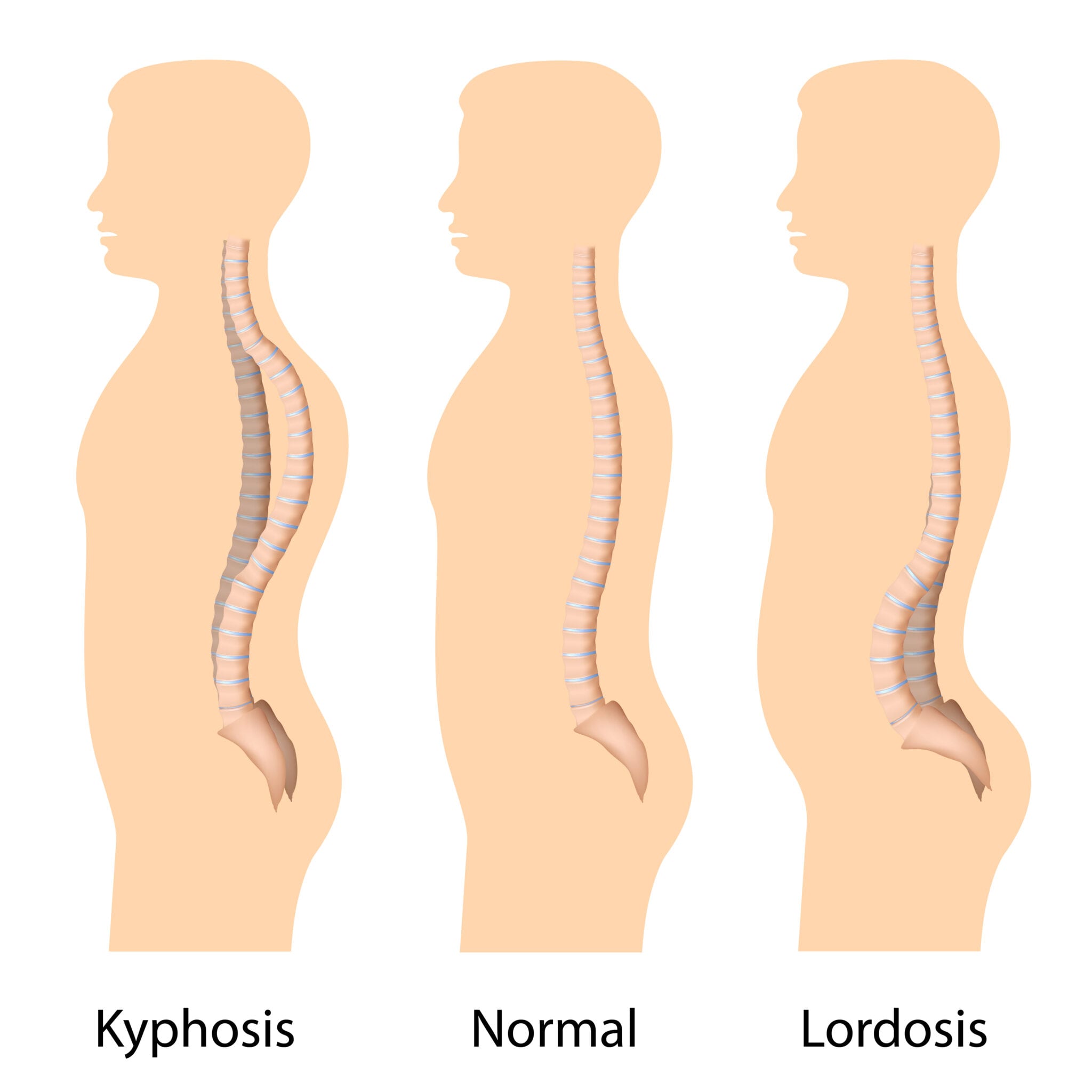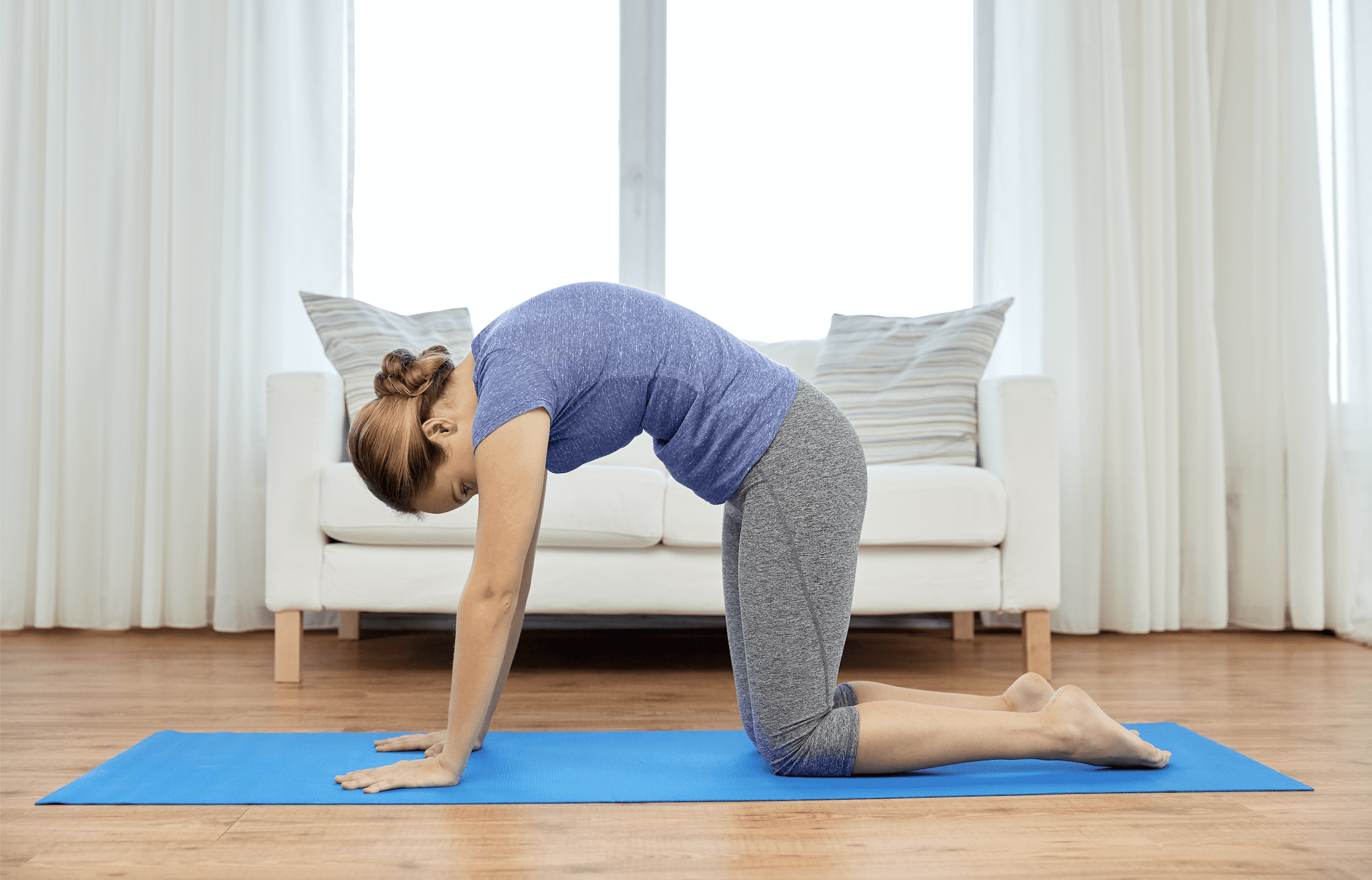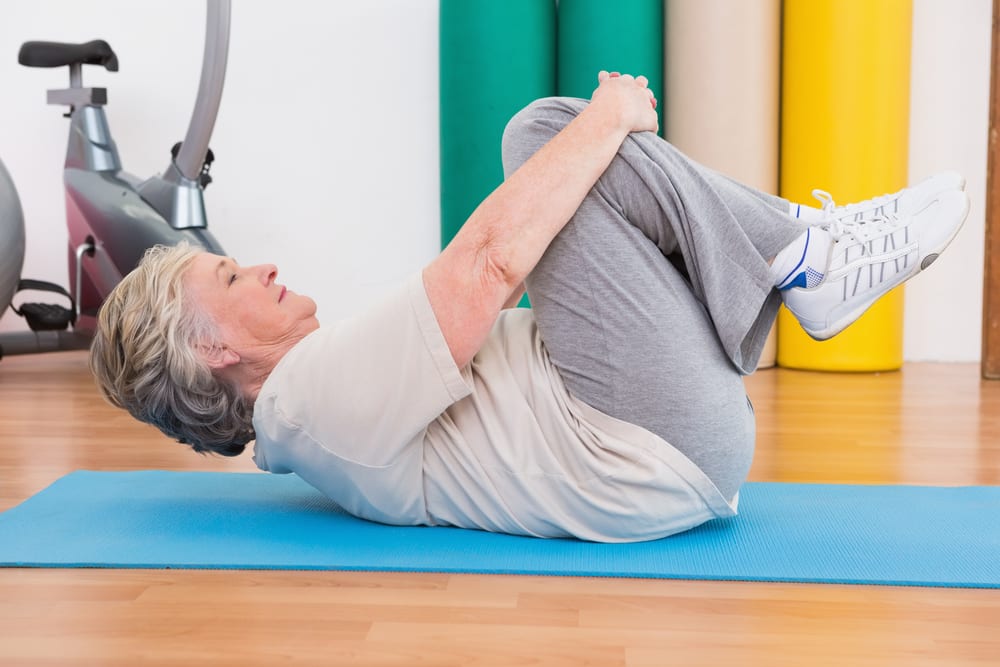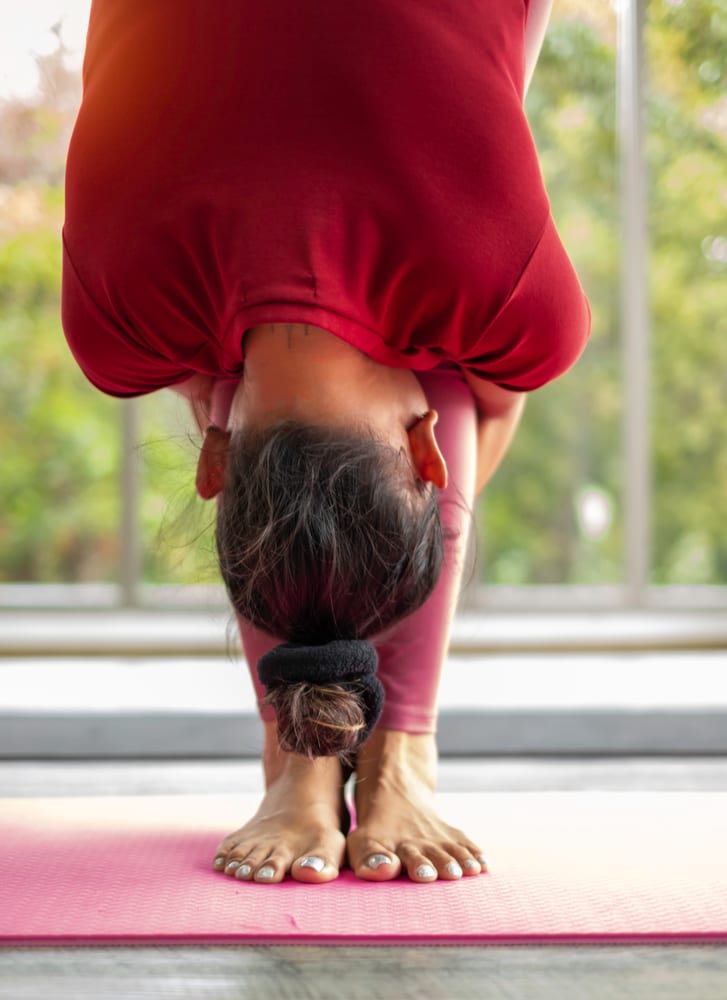In an ideal world we would all have the perfect posture. Nice smooth curves in the spine, all great at shock-absorbing, assisting balance and generally preventing injuries. The reality is that most of us do not have the ‘perfect’ posture, and this is ok, but there are some easy tips to help reduce these deviations. Half of the battle is knowing what they are. Lordosis is close to my heart as I have it, as does my mum and so many of my clients. I find it’s more common in those who are post-natal due to the effect that the change in their centre of gravity has, but it can also occur naturally. First let’s discuss what it is.

Lordosis is an over-exaggerated curve in the lumbar spine. Most people would say visually it looks like you’re sticking out your bum and your belly. It’s a deep extension of the lowest part of the spine – around the back of your waistband on your jeans.
When our spines are held in this position a shortening of the lumbar muscles, plus the hip flexors, occurs (or it can have been caused by this) and the pelvis is tipped forwards into an anterior tilt (tips forwards).
It can often present itself as lower back pain when standing for too long. I find it naturally makes me want to sit down whenever possible. You might find you naturally fold forwards when it’s sore in your bodies attempt to stretch out the lumbar muscles and straighten out the deep curve. From the side it looks like you are sticking out your bottom and it can make you feel like your tummy is always bloated. Really what this is, is a change in your skeleton that your muscles can help control.
Whether your Lordosis is caused by muscle imbalances, or muscle imbalances have occurred because of your Lordosis there are a few muscles that can really help to reduce the effects. Here are my top 4:
Glutes
When our glutes are weak they lose the effect of opening the front of the hips. Stronger glutes will assist in gently drawing the pelvis back to a neutral position and they will also stabilise the lumbar spine.
Hip flexors
Ideally we want strong, flexible muscles, however you will probably find that with lordosis the hip flexors are short and weak. Static stretching of the hip flexors is ideal but exercises such as scissors or toe dips where the hip flexor is flexed and extended under a load will help strengthen them too.
Rectus Abdomis and Obliques
These abdominal muscles have the effect of drawing the hips and ribs closer towards each other. When this happens a slight flattening of the lumbar spine can occur helping to draw the pelvis under slightly and easing the extension of the lumbar spine. Strong abdominals will also help to support the spine and reduce the pressure on the lumbar muscles.
Lumbar extensors
These muscles run either side of the lumbar spine. When they shorten they deepen the curve in the lower back. These will more than likely be tight if you have lordosis, so I try to stay away from any lumbar extension exercise so as not to exacerbate this. Instead try exercises that promote lumbar flexion and stretching instead.
For those times when you lower back is aching the following stretches really do help.
Cat stretch

This promotes lumbar flexion and will help to lengthen the lumbar extensors. Just ensure you use your glutes to flex the lumbar.
Knee hugs

Lie on your back and gently hug your knees to your chest. Roll gently from side to side to massage the spine.
Roll downs

Rolling forwards, with your knees soft, can really help to relax the lower back. Hang down with the back of the next loose and gently sway from side to side allowing gravity to gently stretch the spine.
If you think you may have lordosis, and it is causing you discomfort, I would recommend seeing a physio or good Pilates instructor who will be able to check this for you and give you some suggested exercises.
*
Did you enjoy this blog post on Lordosis? If so, be sure to check out The Pilates PT Method Online FREE 7-Day plan. In it you get access to tailored workout videos, expert articles and guidance (covering areas such as anatomy, mental health, and nutrition) and a starter pack worth over £100. Sign up today by clicking HERE.

